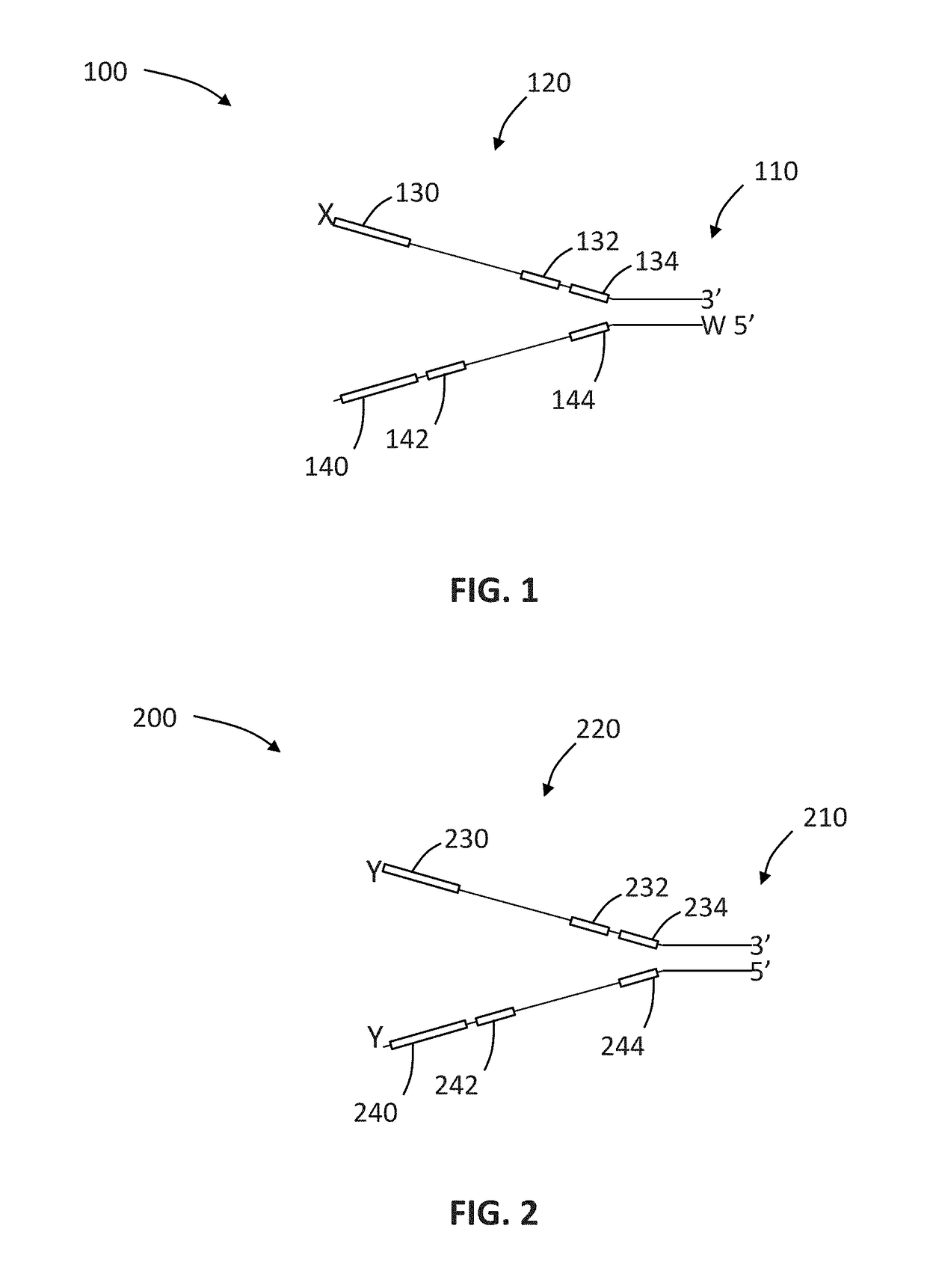Compositions and methods for improving sample identification in indexed nucleic acid libraries
a nucleic acid library and sample identification technology, applied in the field of sequencing of polynucleotides from multiple libraries, can solve the problems of index misassignment between multiplexed, large sample throughput of current sequencing platforms, and increased complexity of multiplexing gains, so as to reduce index jumping or eliminate, the effect of narrowing the activity of the exonucleas
- Summary
- Abstract
- Description
- Claims
- Application Information
AI Technical Summary
Benefits of technology
Problems solved by technology
Method used
Image
Examples
example 1
otocol for Exonuclease Treatment with Optional 3′ Blocking of Indexed Libraries
[0192]This protocol explains how to perform an exonuclease treatment, either alone or combined with 3′ blocking of DNA libraries, to reduce index hopping. This method is designed to be performed on DNA library pools prior to the denaturation step and subsequent cluster generation using the Illumina HiSeq® 4000 and similar sequencing platforms utilizing patterned flow cells and ExAmp based clustering (e.g., HiSeq® X and NovaSeq®).
[0193]Index hopping has been seen to occur where incorrect index sequences are assigned to the insert sequence resulting in sample misassignment. Performing this treatment on DNA sample pools before running on HiSeq® 4000 should reduce the index hopping levels by some level which cannot at this stage be predicted consistently.
[0194]Treatment workflow may be considered to involve four steps: (i) produce DNA sample pool; (ii) perform treatment, (iii) cleanup sample and quantify; and...
example 2
of Index Hopping by Exonuclease Treatment with 3′ Blocking of Indexed Libraries
[0209]The treatment protocol set forth above in Example 1 was applied in combination with the following materials, equipment and methods for clustering and sequencing on Illumina platform.
[0210]Experimental conditions: (1) Human 450 bp NA12878 (Coriell Institute) TrueSeq® PCR-Free library loaded at 300 pM; (2) HiSeq® X instrument and Illumina SBS chemistry according to manufacturer's instructions; (3) 550 nm ILS v3 flow cell; (4) ExAmp amplification as previously described; and (5) 50% adapter spike-in: free forked adapter from the Illumina dual adapter plate (DAP) spiked into template library prior to denaturation, neutralization, ExAmp mix addition and clustering.
[0211]Results of this experiment are summarized in Table 3 below and FIG. 13.
TABLE 3Reduction of index hopping by exonucleasetreatment with 3′ blockingAdapterIndex hopping (% of PF clusters)LibraryspikeNo TreatmentExo + 3′ BlockTruSeq ® PCR-Fre...
PUM
| Property | Measurement | Unit |
|---|---|---|
| temperature | aaaaa | aaaaa |
| temperature | aaaaa | aaaaa |
| diameter | aaaaa | aaaaa |
Abstract
Description
Claims
Application Information
 Login to View More
Login to View More - R&D
- Intellectual Property
- Life Sciences
- Materials
- Tech Scout
- Unparalleled Data Quality
- Higher Quality Content
- 60% Fewer Hallucinations
Browse by: Latest US Patents, China's latest patents, Technical Efficacy Thesaurus, Application Domain, Technology Topic, Popular Technical Reports.
© 2025 PatSnap. All rights reserved.Legal|Privacy policy|Modern Slavery Act Transparency Statement|Sitemap|About US| Contact US: help@patsnap.com



